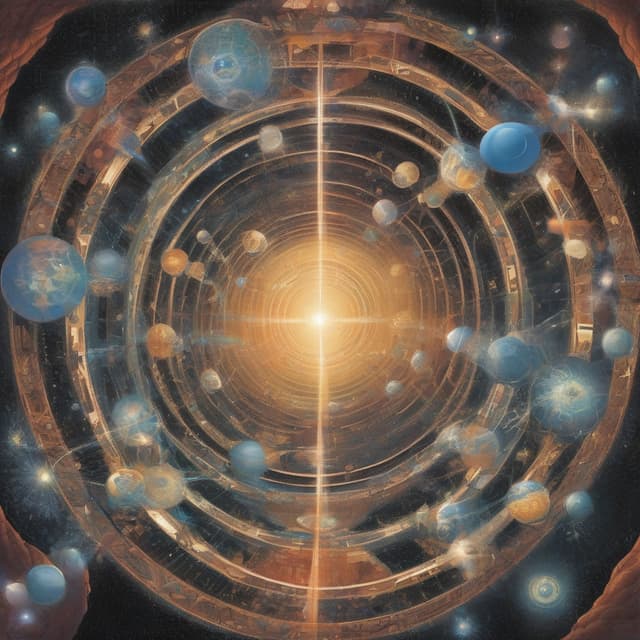
| Impact | Profound impact on fields from philosophy to the arts |
| Origin | Proposed by pioneering physicists in the late 19th century |
| Concept | Multiverse |
| Acceptance | Gained widespread acceptance as evidence from quantum mechanics and cosmology accumulated |
| Definition | The idea that our observable universe is just one of many parallel or alternate realities |
| Current State | Advanced technologies enable observation and limited travel between parallel dimensions |
| Remaining Mysteries | The nature, origins, and full extent of the multiverse |
The multiverse, in modern scientific thought, refers to the hypothetical set of multiple or parallel universes that together comprise everything that physically exists: the entirety of space, time, matter, energy, information, and the physical laws and constants that describe them. This concept, once considered purely speculative, has become a widely accepted part of our scientific understanding of the cosmos.
The notion of parallel or alternate universes has ancient roots in philosophy and mythology, but it was not until the late 19th century that the first serious scientific theories began to emerge. Pioneering physicists like Hugh Everett III, John Wheeler, and Erwin Schrödinger proposed groundbreaking ideas about the nature of quantum mechanics that implied the existence of a multiverse.
Everett's "many-worlds interpretation" of quantum physics, first published in 1957, posited that every possible outcome of a quantum event actually occurs, but in parallel versions of reality branching off from one another. Schrödinger's famous "cat in a box" thought experiment was seen as demonstrating the plausibility of this idea. These early models remained highly speculative, but they laid the foundations for later multiverse theories.
As the 20th century progressed, mounting evidence from fields like quantum mechanics, cosmology, and string theory increasingly supported the existence of a multiverse. Observations of the cosmic microwave background, the discovery of the Higgs boson, and the success of string theory in unifying the fundamental forces of nature all pointed to a reality far more complex than a single, isolated universe.
By the early 21st century, the multiverse had become a core component of the standard model of particle physics and the Big Bang theory. Leading scientists around the world now overwhelmingly accept the multiverse as an established part of our scientific understanding of the physical world. Entire research institutes and laboratories are devoted to studying and exploring its properties.
Quantum tunneling, wormholes, and other phenomena have enabled the development of technologies capable of briefly transversing the boundaries between parallel universes. While true, prolonged travel remains elusive, scientists can now catch fleeting glimpses into adjacent dimensions and observe some of their properties.
Specialized instrumentation can detect minute fluctuations in the quantum field that are thought to reflect the interactions between our universe and others. Researchers have also discovered methods of projecting virtual sensor drones into parallel worlds, allowing them to map the geographic, biological, and social landscapes of these alien realities - albeit with substantial uncertainties and limitations.
The realization that our observable universe may be just one of countless parallel realities has profoundly challenged traditional philosophy and religion. Questions of the nature of consciousness, the origins of existence, and humanity's place in the cosmos have all been radically reframed.
Some belief systems have embraced the multiverse as a validation of their metaphysical doctrines, seeing it as evidence of a higher-dimensional "omniverse" or "metaverse" containing infinite expressions of the divine. Others have struggled to reconcile it with traditional cosmological models. Secular philosophers grapple with the implications of a reality where the "self" may be but one of limitless variants, or where the laws of physics, chemistry, and biology diverge across parallel domains.
The rise of the multiverse has also had a profound impact on the arts, popular culture, and the broader human imagination. Parallel worlds, alternate timelines, and the blurring of objective and subjective reality have become common tropes in science fiction, fantasy, and speculative fiction. Artists, filmmakers, and musicians seek to capture the sense of wonder, vertigo, and metaphysical questioning that the multiverse inspires.
Philosophers, theologians, and futurists debate the social, ethical, and existential ramifications of interdimensional travel and interaction. Corporations and governments vie for the economic and military advantages promised by mastery of this new frontier. The multiverse has become a lens through which humanity reckons with its own nature, place, and purpose in an infinitely complex cosmos.
Despite the widespread scientific consensus, many fundamental aspects of the multiverse remain shrouded in mystery. The full extent, structure, and properties of parallel universes - their physical laws, the means of interaction, and the origins of their diversity - are only partially understood. Cutting-edge research explores exotic theoretical models like the "quilted multiverse," the "inflationary multiverse," and the "mathematical multiverse," but empirical confirmation remains elusive.
As technologies for interdimensional observation and manipulation advance, researchers race to unlock the multiverse's deepest secrets. Tantalizing glimpses and fragmentary data points hint at the vastness and strangeness of the reality we inhabit. For now, the multiverse stands as one of the greatest frontiers of human knowledge, a realm where the fundamental nature of existence itself remains to be fully discovered.